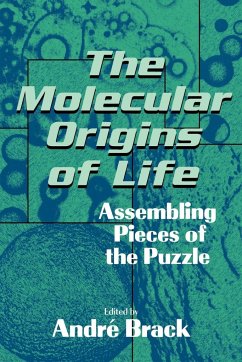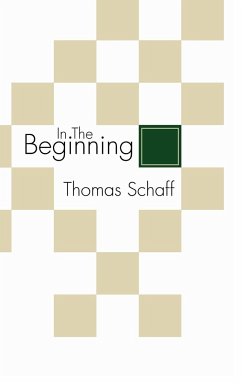The origin of life was an event probably unique in the Earth's history, and reconstructing this event is like assembling a puzzle made up of many pieces. These pieces are composed of information acquired from many different disciplines. The aim of this book is to integrate the most recent discoveries in astronomy, planetology, palaeontology, biology and chemistry, and use this knowledge to present plausible scenarios that give us a better understanding of the likely origin of life on Earth. Twenty-three top experts contribute chapters that discuss everything from the environment and atmosphere of the early Earth, through the appearance of organic molecules in the prebiotic environment, to primitive chiral chemical systems capable of self-replication and evolution by mutation. The book also discusses various clues to the origin of life that can be obtained by a study of the past and present microbial world, as well as from Saturn's moon Titan and the planet Mars. Chemists, biologists, earth scientists, and astronomers will find this book a thought-provoking summary of our current state of knowledge of this extraordinary event.
Table of contents:
List of contributors; Introduction André Brack; Part I. Setting the Stage: 1. The origin of the atmosphere Tobias C. Owen; 2. The early atmosphere as a source of biogenic compounds James F. Kasting, and Lisa L. Brown; Part II. Organic Molecules on the Primitive Earth: 3. The endogenous synthesis of organic compounds Stanley L. Miller; 4. Hydrothermal systems Nils G. Holm, and Eva M. Andersson; 5. Cosmic origin of the biosphere Armand H. Delsemme; 6. Meteorites John R. Cronin; 7. Micrometeorites on the early Earth Michel Maurette; Part III. Possible Starts for Primitive Life: 8. Membrane compartments in prebiotic evolution David W. Deamer; 9. A step-by-step analysis of the early chemistry of life in an iron-sulfur world Günter Wächtershauser; 10. The thioester world Christian de Duve; 11. Origins of the RNA world Alan W. Schwartz; 12. Catalysis of RNA synthesis: a possible route from prebiotic chemistry to the RNA world James P. Ferris; 13. Catalysis in the RNA world Kenneth D. James, and Andrew W. Ellington; 14. Self-replication and autocatalysis Jens Burmeister, and Günter von Kiedrowski; Part IV. Clues from the Bacterial World: 15. Hyperthermophiles and their possible role as ancestors of modern life Karl O. Stetter; 16. Tracing the roots of the universal tree of life J. William Schopf; Part V. Clues from Other Planets: 17. Titan François Raulin; 18. Life on Mars Christopher P. McKay; Part VI. Conclusion André Brack.
This book integrates recent discoveries in astronomy, palaeontology, biology and chemistry, and uses this knowledge to help us to understand the likely origin of life on Earth. Twenty-three top experts discuss everything from the environment and atmosphere of the early Earth, through the appearance of organic molecules, to chemical systems capable of self-replication and evolution.
Twenty-three top experts review recent discoveries in astronomy, paleontology, biology and chemistry, and use this knowledge to help us to understand the likely origin of life on Earth.
Table of contents:
List of contributors; Introduction André Brack; Part I. Setting the Stage: 1. The origin of the atmosphere Tobias C. Owen; 2. The early atmosphere as a source of biogenic compounds James F. Kasting, and Lisa L. Brown; Part II. Organic Molecules on the Primitive Earth: 3. The endogenous synthesis of organic compounds Stanley L. Miller; 4. Hydrothermal systems Nils G. Holm, and Eva M. Andersson; 5. Cosmic origin of the biosphere Armand H. Delsemme; 6. Meteorites John R. Cronin; 7. Micrometeorites on the early Earth Michel Maurette; Part III. Possible Starts for Primitive Life: 8. Membrane compartments in prebiotic evolution David W. Deamer; 9. A step-by-step analysis of the early chemistry of life in an iron-sulfur world Günter Wächtershauser; 10. The thioester world Christian de Duve; 11. Origins of the RNA world Alan W. Schwartz; 12. Catalysis of RNA synthesis: a possible route from prebiotic chemistry to the RNA world James P. Ferris; 13. Catalysis in the RNA world Kenneth D. James, and Andrew W. Ellington; 14. Self-replication and autocatalysis Jens Burmeister, and Günter von Kiedrowski; Part IV. Clues from the Bacterial World: 15. Hyperthermophiles and their possible role as ancestors of modern life Karl O. Stetter; 16. Tracing the roots of the universal tree of life J. William Schopf; Part V. Clues from Other Planets: 17. Titan François Raulin; 18. Life on Mars Christopher P. McKay; Part VI. Conclusion André Brack.
This book integrates recent discoveries in astronomy, palaeontology, biology and chemistry, and uses this knowledge to help us to understand the likely origin of life on Earth. Twenty-three top experts discuss everything from the environment and atmosphere of the early Earth, through the appearance of organic molecules, to chemical systems capable of self-replication and evolution.
Twenty-three top experts review recent discoveries in astronomy, paleontology, biology and chemistry, and use this knowledge to help us to understand the likely origin of life on Earth.








